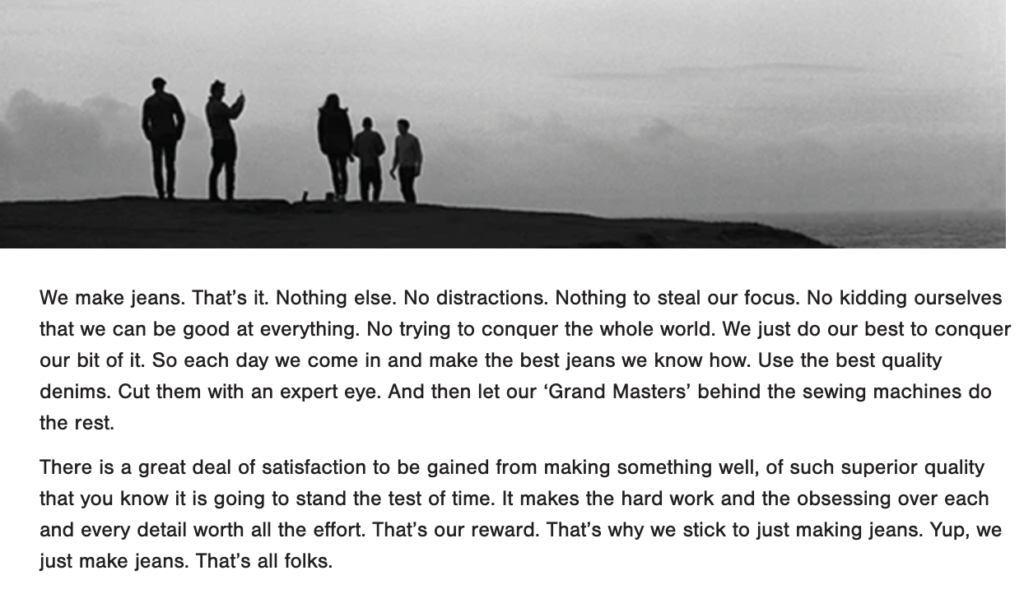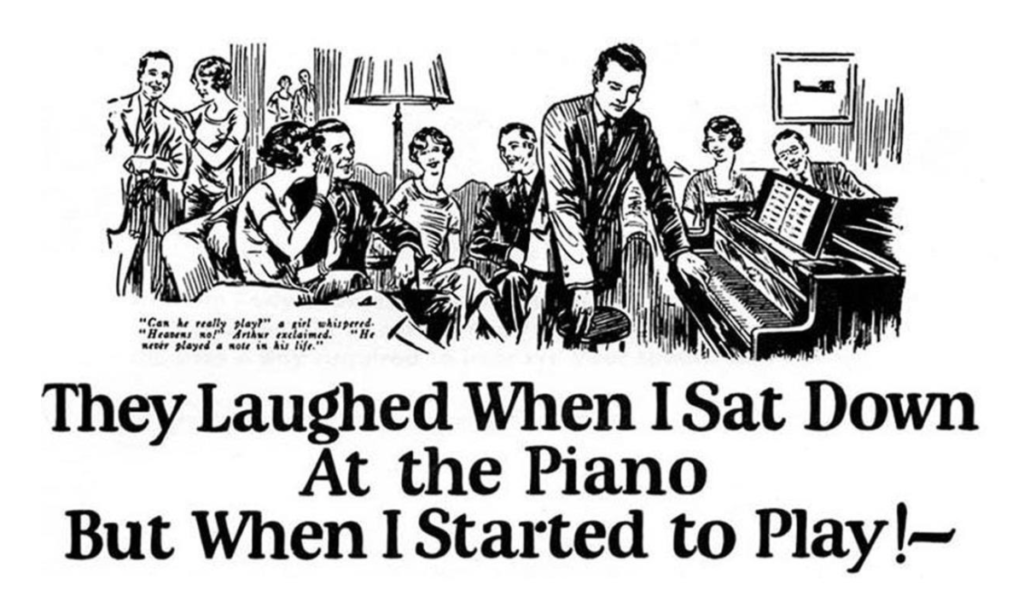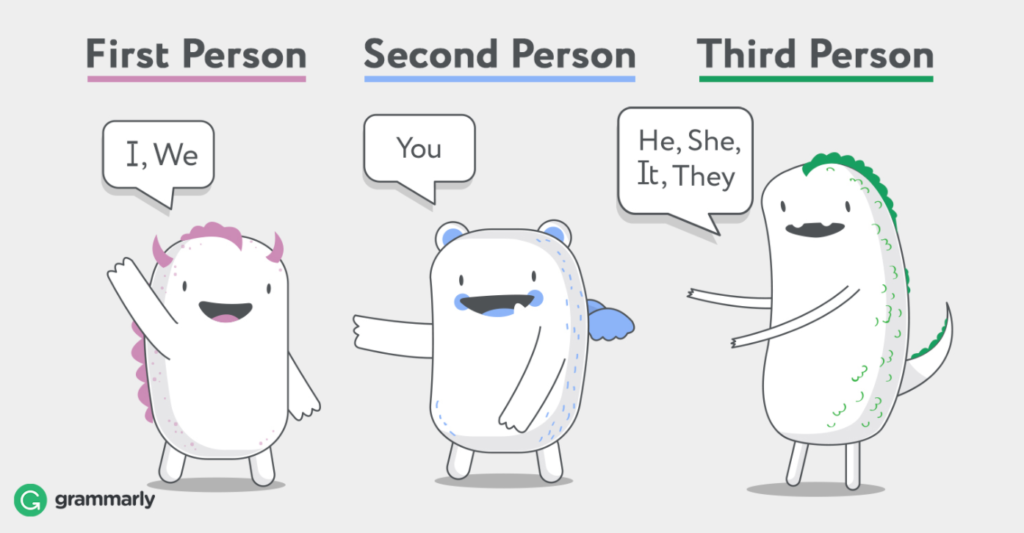“Let’s get to the heart of the matter. The power, the force, the overwhelming urge to own that makes advertising work, comes from the market itself, and not from the copywriting. It cannot create a desire for a product. It can only take the hopes, dreams, fears and desires that already exist in the hearts of millions of people, and focus those already existing desires onto a particular product. This is the copywriter’s task: not to create this mass desire – but to channel and direct it.” – Eugene Schwartz, one of the best and highest-paid copywriters to have ever lived.
One way to get attention to any marketing piece that you are writing is to start with a famous quote, just like I did above.
Copywriters use a deep understanding of psychology, different levels of awareness about specific audiences and human problems, to write words that get people to take action. They create words that have the intention to educate, persuade and sell.
Your prospect, on the other hand, has a natural resistance to selling and persuading. You can overcome this by connecting with prospects on an emotional level and then offering solutions to their problems. People are more receptive to getting a solution, then pointing out the problem.
Are sellers also buyers?
According to legendary copywriter Bill Bonner, there are two parties in every transaction, each with an agenda seller vs. buyer.
The seller always wants to get the buyer to make an offer and the buyer wants to avoid wasting time and money. The buyer anticipates the seller’s push and actively resists. To avoid these situations, consider the following examples:
1. Buyer tosses junk mail. Unless:
- There’s a beneficial promise on the envelope
- Stops to consider it and opens the envelope
2. The buyer then makes a decision
- If the message is still awesome, they continue
- If they get the wrong message, they will immediately delete it.
It is the same with emails and websites. An audacious email subject line will lead the buyer to open it and a great website headline will keep the buyer stick around and act.
Pro Tip: Think about real-life subject lines from other companies and how those subject lines got you to open their email. Then implement them in your campaigns and get people to click on them.
Your job is to help your prospect solve a problem or achieve a goal. If you approach with that perspective, you are helping someone you care about to accomplish something relevant to the prospect. Also, your writing will be more reliable, more persuasive and more effective.
Recipe for the victory: unexpected angle, unique promise, surprise and delight, keep it fresh and relevant, address current events like it’s shown on the examples below.


To establish intimacy and a one-on-one tone that resonates with the prospect, you have to be informal and speak in a conversational tone. In this blog, we bring you secrets of successful writing with passion.
How do you express passion in writing?
There are 4 secrets of writing with passion :
1. WLYT – Write like you talk
“You have to convince the reader that you are one of them. You have to become your prospect and speak as you understand him.” (Jeff Laurie)
So-called conversational copywriting is the part of copywriting that feels like a conversation between real people. It’s usually most effective in the online world, where you can’t hear the voice or see facial expressions.
Few tips that will help you accomplish the secret of writing as you talk are punctuation marks, the proper voice, short sentences and FK scoring.
Punctuation marks are the essential facets of almost every language. They have the power to change the meaning of a whole sentence or content. The best example is the following sentence, with a hint of humor: Let’s eat grandma. Let’s eat, grandma. As you can see, commas save lives.
The proper voice is essential because it shows the character of your business, the spirit and the values of your brand. There are three ways to put words in the right tone and have a positive effect on your messaging.
First, imagine the person you are writing to. Picture him or her as a friend. Second, believe that the product you are selling will improve your friend’s life. And last, Figure out what it would take to convince you to buy the product.
Short sentences are easier to scan and digest and moves the reader along. You don’t need to make them all short, but they are essential to avoid the monotony of the content. Don’t waste words on long, spiritless sentences. Keep in mind that people have to understand what you are saying.
Flesh Kincaid or FK score is a program that measures the simplicity of writing. It’s a faster way to find out how easy or difficult it is to understand the writer.
According to Awai, there a few factors that FK uses to determine the score: the average number of words per sentence, the average number of letters per word and the frequency of passive and complex constructions.
Raise your voice, create a pace, emphasize important points, use bold, italics, CAPS, make a pause, skip a line and you are on the right path to writing quality and captivating content.
To show you what “writing as you talk” looks in practice, here is the example from an online clothing site that uses a conversational tone, using short sentences, simple words, and tight writing:

2. Generate passion
Be a passionate communicator.
Let readers feel the power of your enthusiasm. Inspire them and fascinate them with the content you write. It doesn’t have to be anything Sci-Fi related or spectacular. Give them something educational, informational and useful that they can grab and come back for more.
When you write with passion, your words will carry more meaning, your ideas will be more transparent and compelling and your voice will be more reliable, more productive and more convincing. And last but not least, your energy will carry over to your prospect.
To generate passion, you have to know the prospect and study the product. Feel the problem, feel the solution, use the prospect’s language and then offer the transformation!
At the following link, you can read a very informative, passion-driven article as the perfect example.
3. The power of story
Crafting a compelling story is crucial.
To put the power of the story in your content, make it more emotional when appropriate. You can use a story to build credibility through positive customer reviews and to show the reader the greatness of your product/service.
You want the prospect to get a clear picture of how their lives will improve as a result of using your product/service.
To find a story, talk to the product creator, find out how/why the product was created, discover what goes into producing it, speak to the clients’ stuff (engineers, etc.), access testimonials and reviews.
The more you know about the market, the client’s product or service and consumers’ needs, the more prepared you will be to write a better story for the more successful business.
As an example, here is John Caple’s classic written for a musical school, one of the most popular and successful ads in history. It employs a storyline appeal and answers to every individual’s need for attention and recognition too.

4. Find your voice and write a story
Find the tone of your voice.
There are three types of voice you can use when writing a story:
1st person: prospect can relate and see how it will solve her/his need
2nd person: influential “you” approach talks directly to the readers and draws them in
3rd person: provides a parable – a lesson with irresistible benefits

To write your story, you have to identify your message and guide the readers so that they can respond.
You also have to plan your entry, which is, in most cases, the middle of the action. Then lay out the story development – know where it ends and overcome obstacles.
First, you have to know and prepare your story. Ask yourself who is the hero, what is the problem, the solution and how did the hero (prospect, if you remember it from the last blog) gets to the solution?
Start with how the story ends, list inspiring details and begin in the middle. The third step is to construct the story – make it tight, tell it quickly, stick to the truth, use specifics, juicy details and tie it together with promise.
Features vs. Benefits – Why do they matter in copywriting?
What make it work are the features of your offer. The benefits are the results it creates for the customer. To make it more clear, here are the short definitions:
Feature: What the product is or what it contains
Benefit: What the product does or offers
Deeper benefit: How the product can change the prospect’s life
Benefits allow readers to navigate through your content more efficiently and to find things they need. Benefits create a psychological link between the consumer’s wishes and your product or service.
Emotions fuel benefits statements. When potential customers are emotionally attached to a product, they will often buy it automatically and impulsively.
The stronger the emotional response is, the customer will faster decide to buy a product or service.
To help you get started, here’s an example. Let’s take a look at the benefits of the car, which is ample power.
The benefit of ample power may stimulate our prospect’s desire to BE powerful. Prospect sees himself as strong, vigorous, perhaps invincible, which moves him closer to the sale.
Buying satisfies our emotions. When writing your copy, do not forget to focus on the emotional side of things.
Another example is the features and benefits of the fictitious vacuum cleaner:
Feature: Lightweight (4.5 kg) vs. Benefit: You won’t strain your back carrying vacuum cleaner up and down the stairs.
Feature: Bagless vs. Benefit: Save money – no more bags to buy.
Feature: 5-year warranty vs. Benefit: Peace of mind. No worries if your vacuum cleaner stops working.
Feature: HEPA filter vs. Benefit: Better for your health. The vacuum cleaner will leave your house cleaner than ever before. It removes the smallest speck of dust and your house is cleaner than ever before.
Look for the unique differences. Identify exclusive benefits that the prospect will like, show that you are excited about them and set your product or service apart.
Remember, you want to think about this specific question – why would I buy this? Be the customer!
Communicate more productive benefits by telling a simple story, keep it real and have in mind that authenticity builds trust.
How can an individual become passionate about writing?
Go beyond the surface.
How to find a passion for writing? It takes a little time and a lot of work. And to find a proper style and reward for yourself as a writer, you have to dig deeper.
By definition, writers are natural passionate beings.
If you are a copywriter, then you probably know how many hours, effort, research, and words it takes to write a single text. And if you don’t like writing or you only do it to pay your bills, it is almost impossible to be a good writer or to improve your skills. No matter how hard you try.
“A-level” copywriters understand it’s not just the surface benefits, it’s something more profound, solving deepest needs and desires. You need to address the reasons your product is better than your competitors’ products.
Both features and benefits are equally crucial for compelling content, but the benefits allow you to reach the customer.
The key to success is to understand the benefits of your product entirely. Only then can you ensure that the audience knows them and can relate to them.
Learning how to focus on selling benefits over the features of your products takes a lot of time and patience.
You can practice and improve your skills by making a list of the features and benefits for a specific product or service. This will help you find a new way of looking at your product, which can lead you to a better connection to your consumers.
You lack confidence in your writing or have a knotty problem you need help with? We are here to solve them!
